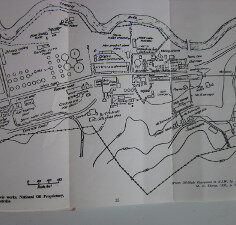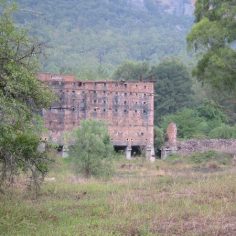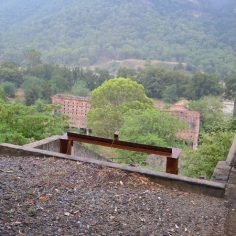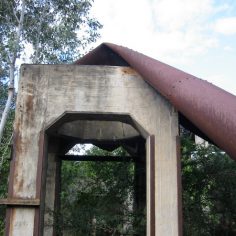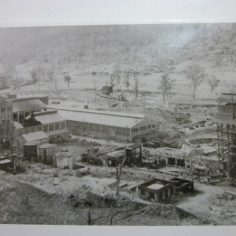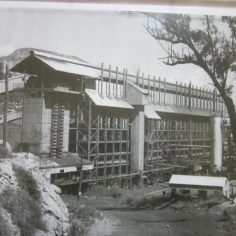Whilst the years from 1938 to 1948 were tough years if you happened to be a miner or a miner’s wife, life was difficult if not down right tough. When construction of the Processing Plant commenced in 1938 there were no local facilities and no accommodation, so the early miners often had to build their dwellings from hessian and a few materials that could be scrounged locally. Hence the expression “Bag Town” was an apt term for the early dwellings on the north side of the Capertee River.
Later accommodation was constructed for single men’s quarters. These quarters were often noisy so it was not surprising miners looked to find their own form of accommodation. There has been much written about Glen Davis and for a detailed history you might like to look at Leonie Knapmans “History of Glen Davis” or Glen Taylor’s book “Glen Davis”.
With the war years approaching there was a sense of urgency to bring Glen Davis into production principally for the supply of petrol which was being threatened by shipping attacks in the Pacific Ocean. The plant was designed to produce 10 Million gallons of petrol a year. The best production as around 1942 with a total of 2.5 million gallons.
As a result of poor planning and lack of research, the plant was built using old equipment and technology, and even the obvious things such as a reliable supply of water was largely ignored. Whilst this was the largest development in NSW up until this point, the operation was always running at a loss and the subsequent post war years saw more capital pouring into the plant with no improvement in production. As a consequence the plant was closed in 1952 and whilst much of the old buildings have been demolished, there is still a great deal of remains of the plant still evident.
There is a regular stream of people coming to view the works on a special tour running on Saturday afternoons at 02:00 pm. For details go the Tour page.

